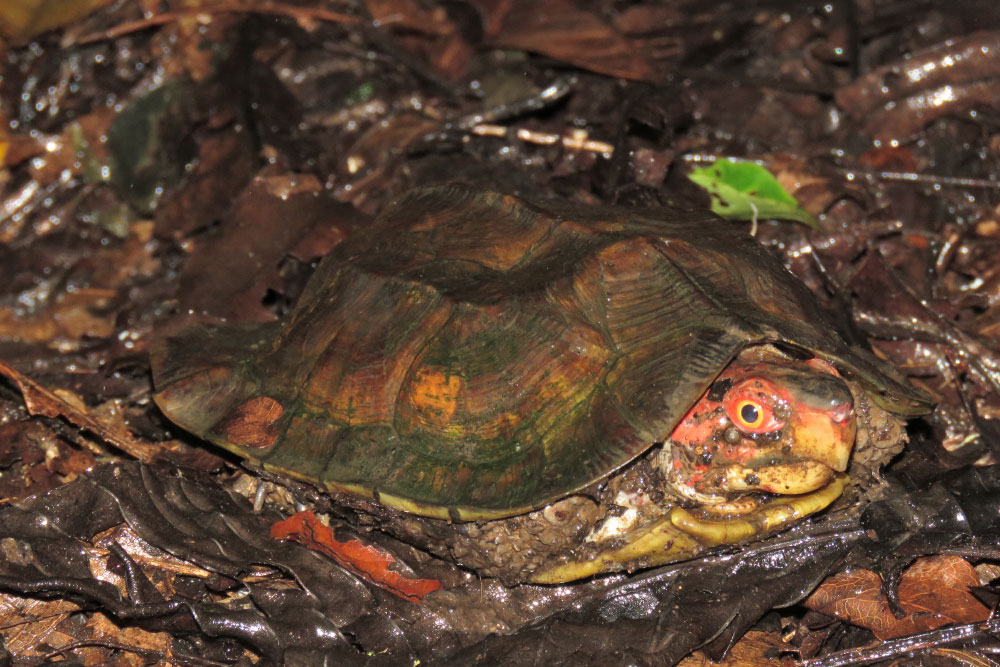 "
"
Originally appeared in Pollachi Papyrus.
During one of my recent bird surveys in the Anamalai Hills, I had the privilege of sighting the rare (Cochin) Forest Cane Turtle. Forest Cane turtle is one of the rare reptiles of our fragile rainforests in the Western Ghats chain of mountains. It is a forest-dwelling species and found mostly in the dense forests, and, unlike many other turtle species, they avoid perennial water bodies like streams and ponds. The distribution of the cane turtle has been reported in three states so far – Karnataka, Tamil Nadu, and Kerala.
Cane turtles are tiny in size (10cm) and well camouflaged on the forest floor making it difficult to spot them. They have a relatively flatter brownish-green carapace with a prominent middle ridge. They have a prominent snout and big eyes. Males have a bright red, yellow and black head; females are drab and larger than males.
This species is renowned for its re-discovery after 70 years by (the late) J. Vijaya – the first woman herpetologist in India. Hence, the species was named after her – Vijayachelys silvatica.
The species is listed as endangered by the IUCN. Since Forest Cane Turtles are very sensitive to changes in their habitat, the disturbance and degradation of evergreen forests is the biggest threat they face. Apart from that, they are also hunted for their meat by many communities who are native to the Western Ghats, causing a direct threat to their population. In India, the species has been given legal protection under Schedule-I of the Wildlife (Protection) Act, 1972.

 CI is a non-profit, non-commercial portal that aims to facilitate wildlife and nature conservation by providing reliable information and the tools needed to campaign effectively.
CI is a non-profit, non-commercial portal that aims to facilitate wildlife and nature conservation by providing reliable information and the tools needed to campaign effectively.
Chosen as 'Picture of the Week'
Rediscovered after 70 years by J. Vijaya, the cryptic, forest cane turtle is found in the wet evergreen forests of Karnataka, Kerala and Tamil Nadu.